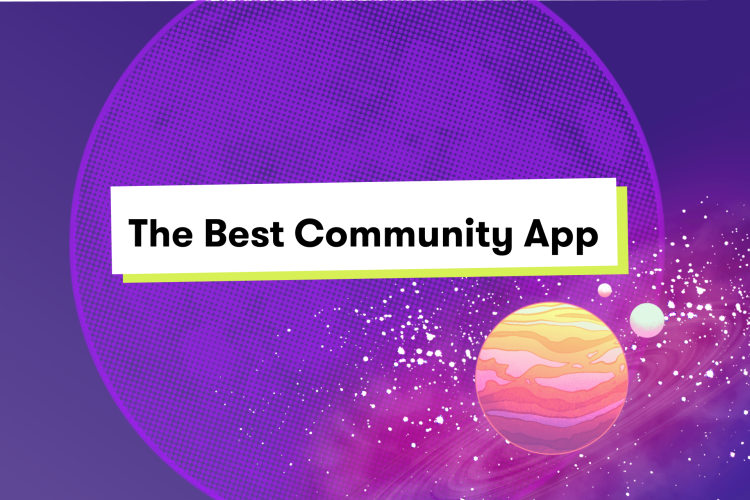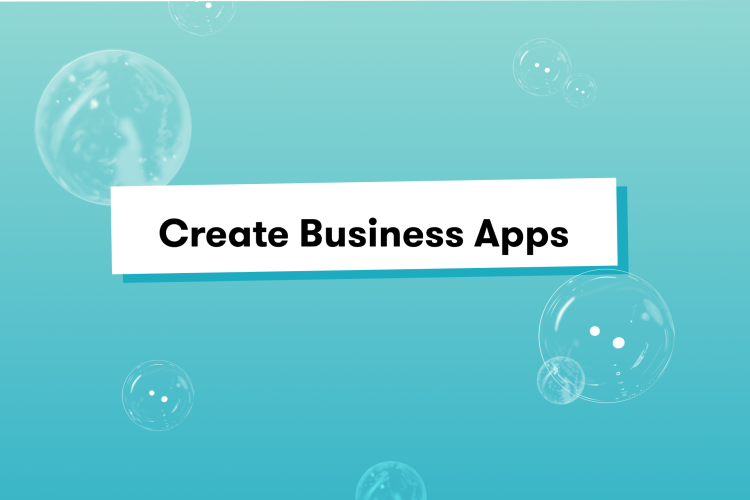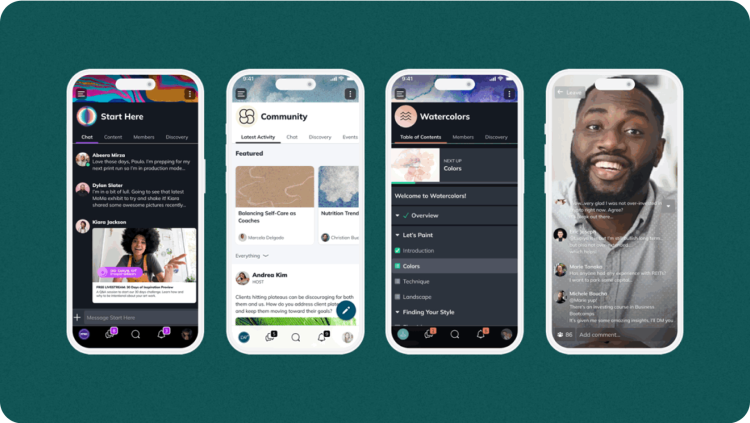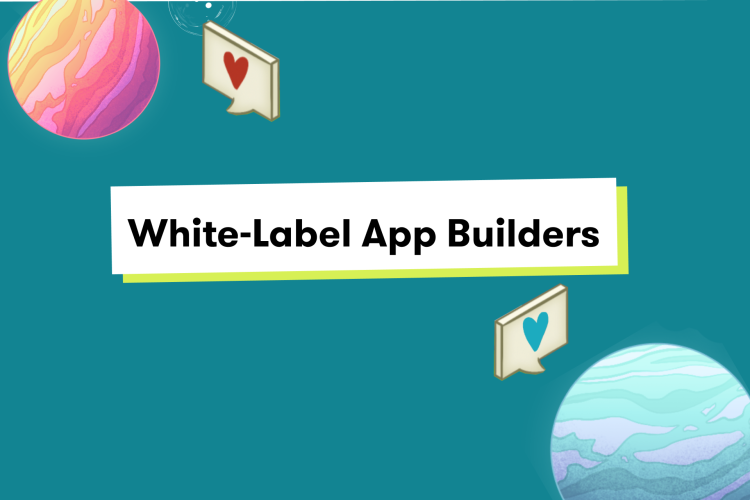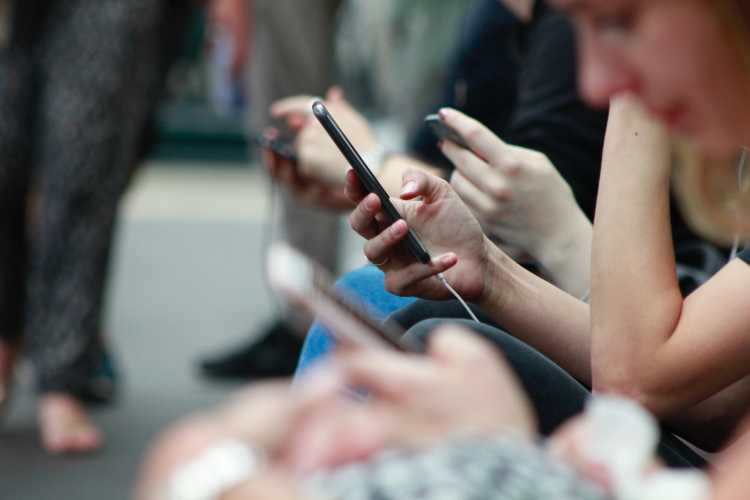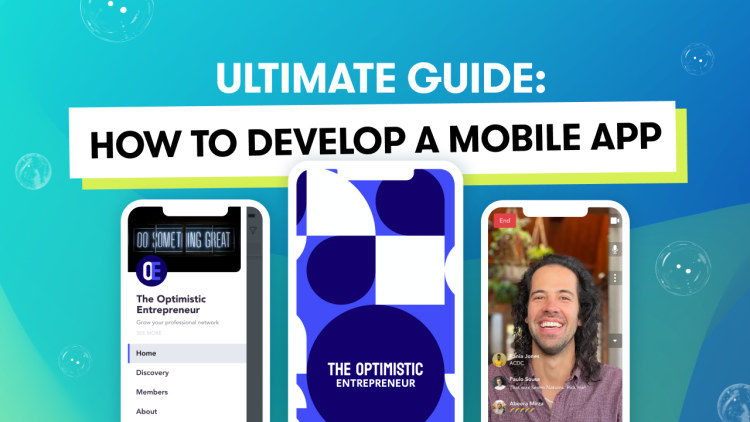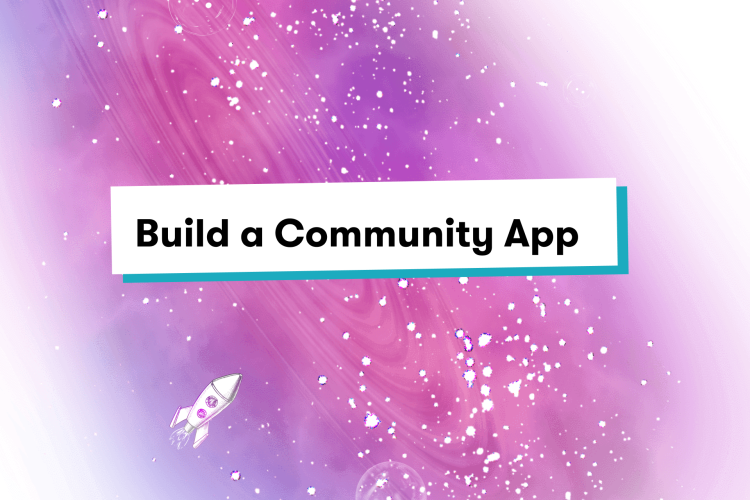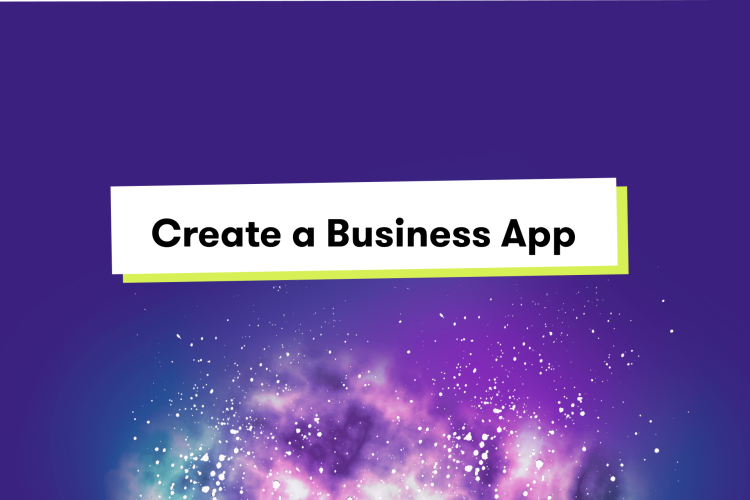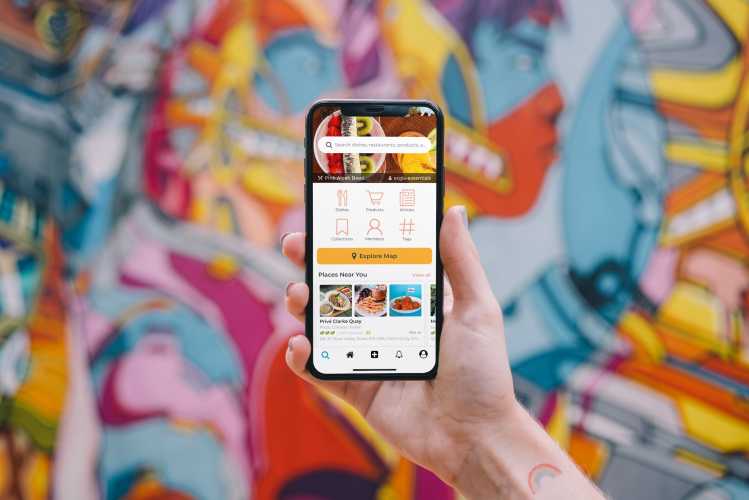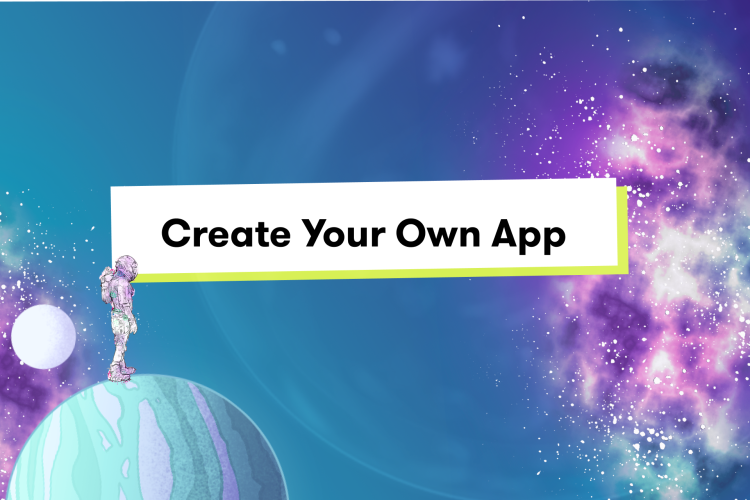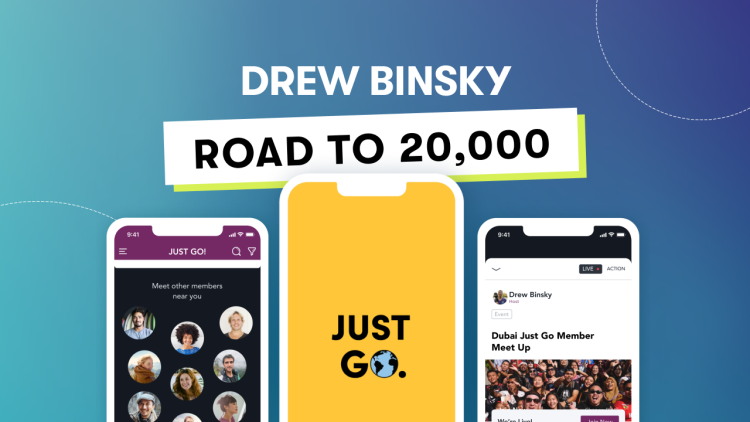Branded Apps
Why B2B Communities Are Ditching Slack for Branded Apps
B2B brands first adopted Slack to run online communities. But moving the party into your own apps creates your next wave of member growth.
Author
James Mulvey, Director of Mighty Pro Marketing
Last Updated
February 6, 2025
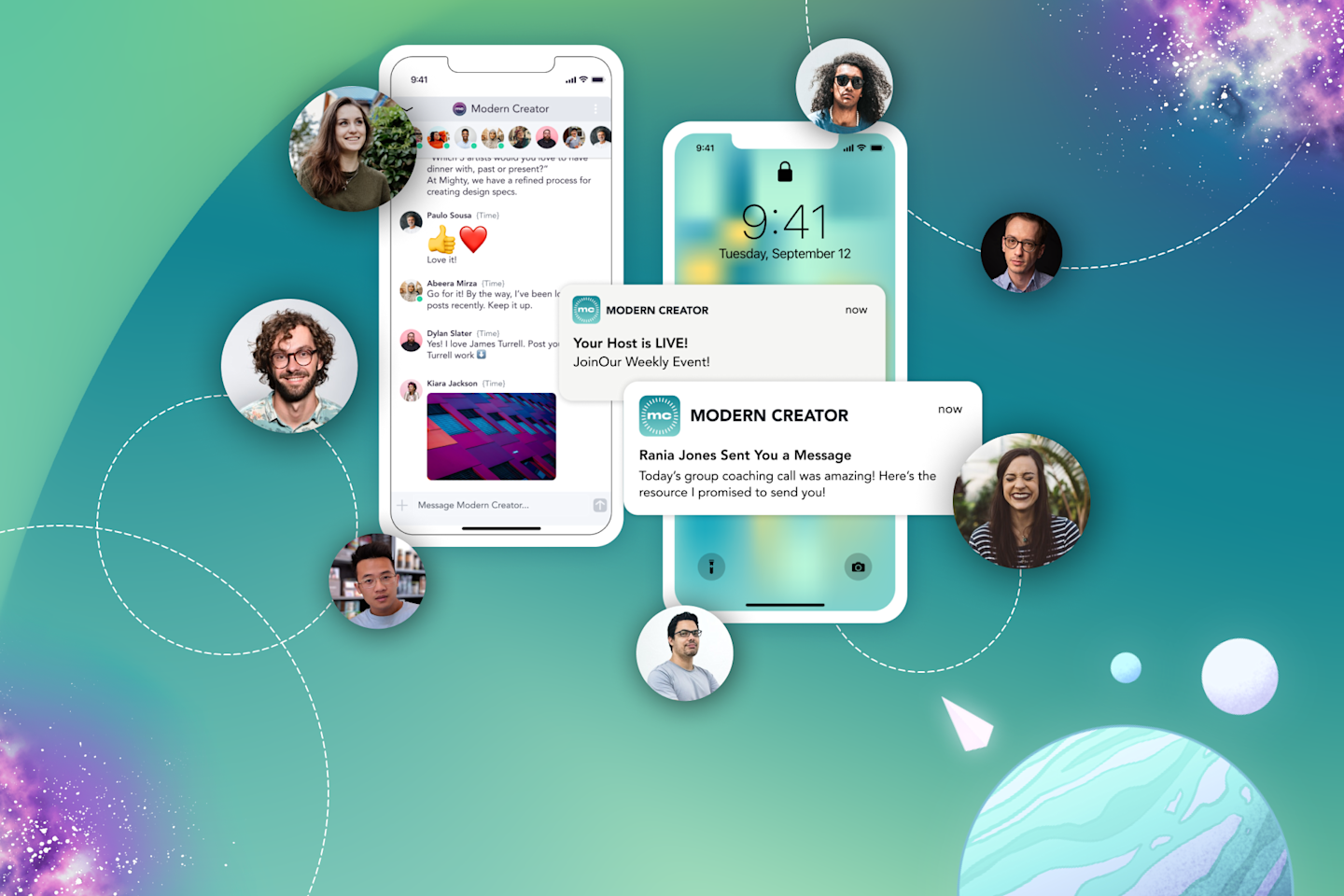
Table of Contents
Slack is a fantastic tool for communicating with teams. Sure, it’s noisy, sends you never-ending anxiety-triggering dings on your phone at all hours of the day, and is completely draining. But it’s hard to imagine modern work without it.
While Slack will stick around for workplaces, it was never designed for running effective online communities.
At Mighty Pro, we’ve helped brands like TED and Mindbody launch their own branded communities beyond the walls of third-party platforms.
If you’re seeing success with running a B2B community in Slack, you’ll see way higher member retention and growth by moving your community into a community management platform and your own branded apps.
In this article, I'll show why hosting your community with a community management platform like Mighty Pro makes more sense for B2B communities, especially when you deliver your community within your own branded iOS and Android apps.
#1 - Slack is optimized for messages, not members
Slack is optimized for one thing: showing you real-time messages. This is a killer feature for teams. But people don’t join communities for messages and content. They join to learn from and meet other people.
The primary value of B2B communities is peer-to-peer intelligence. You want to learn directly from and chat with other members in a similar role, industry, and level as you.
The B2B software brand Mindbody, for example, runs an awesome community helping their customers learn from each other. Over 15,000 business owners have joined, sharing what’s working in their gyms, spas, and salon businesses.
Members access everything from one app: marketing masterclasses, live training sessions on Mindbody’s software, discussions on accounting and financial management, and support from other gym and spa owners.
Having everything in one place helps them put a greater emphasis on features that bring members together such as signing up for weekly events that appear right in the feed, livestreams that people can join and see happening when they’re in the app, or seeing members in the same city as them to connect in IRL with a local meet-up, and dedicated groups for specialized topics.
They’ve designed the community to offer much more than messages and advice.
As they make clear in their community guidelines, “Nothing builds a beautiful conversation faster than sharing your stories and experiences, and nothing shuts one down faster than just posting advice. If you’ve written the words, ‘you should…’ hold up. On the other hand, if you find yourself writing, ‘In my experience…’ keep going!”
#2 - A branded app simplifies your front door
When you run a B2B community in Slack, you have a complicated entry into your community.
First, people need to hear about you.
Second, you need to send them a link.
Third, they need to have or create a Slack account.
Next, they need to navigate into your specific Slack workspace. Then they need to ignore all the messages from their other workspaces, communities, and threads they’re following. And finally, they need to remember to come back!
Most B2B communities grow by word of mouth, so it’s easy to lose people right from the start.
With Mighty Pro, you’re giving people a direct login and dead-simple CTA: download the app from the Apple or Google Play stores.
You can now mention your community on a podcast and people can instantly search for it, find your app store listing, download it, and go straight in (if you have a free community).
You can also promote in any social ads, Instagram stories, plus do tactics like offering a one-day event or mini-workshop to attract new members.
If you choose, any posts from you or your members can be indexed on Google, helping people discover your community with popular search results.
You can link to specific posts, member videos, or resource libraries inside your community on social media. You can host videos, record livestreams, and include these in new posts, giving people more and more ways to discover your community.
The impact is that you boost your conversion rates and overall member retention as you’ve made it so much easier to discover, download, and access your community.
“We found that people would get very confused before we had our own app,” one community manager told us.
“Now we can mention our app on a podcast, include a direct link in an Instagram Story, and talk about it at a conference. People can then find it and download it directly from the app stores. This allows our app to bring together so many pieces of our content, our podcast, our weekly YouTube show, our in-person community, and conferences. We’ve been able to structure our campaigns around what’s happening inside the app as well.”
#3 - You’re missing livestreams and high-ticket events
With Slack, you can create a channel for your events or promote links to Zoom meetings in your posts. But for members, it can be quite cumbersome to join.
Slack is not an event platform and members need to sync their calendars and then remember to log in to the event link, not the Slack channel, which while workable, is not an ideal event experience, especially if you’re charging for a premium membership.
With your own branded app, members have a radically different experience. With native Zoom and Crowdcast integrations, people can register for events and attend them in the same place they’re chatting with members, joining groups, or taking one of your courses. Or you can launch a livestream for informal Q&A sessions and energetic discussions.
And finally, when it’s showtime, you can remind people to attend with branded mobile notifications and email links that drive right into your app and community.
This drives record attendance, creates FOMO for the members that miss these events, and also gives you a growing library of on-demand sessions that you can include in your community or spin up into a new premium training membership.
#4 - You can’t customize Slack to your B2B brand
Slack looks like Slack. But with your own white-labeled apps, you can customize your community with your branding, and unique structure, and reorganize things around the purpose of your community.
Some B2B communities might lean more towards networking and peer-to-peer groups. Others might be structured with cohorts and monthly themes that members work through.
With everything inside your own apps, your members will be fully immersed in your branding. It’s your logo on the apps. Your aesthetic. Your colors and imagery. Plus, with our SSO integration, members can even log in with their website credentials, creating a unified experience across all of your branded platforms.
You can see what’s possible with Mighty Pro’s branding customization here.
#5 - You’re competing with work messages and hundreds of channels
If you host your B2B community in Slack, members can join new communities, see their work’s Slack environment, and get distracted by the other Slack channels and communities they’ve joined in the past.
If people ARE logging into your Slack community, that’s pretty amazing. You’re delivering true value as they’ve dodged a lot of distractions to get there. By bringing your community into your own apps, you’re only going to see this traction amplified. Rather than being just an interesting spot on Slack, you’ll be building your brand every time people login in.
As one Head of Community told us after moving their community into their own apps, “Having a branded app gives our members a sense of belonging. It’s easily identifiable and has elevated our member experience. It’s definitely increased our credibility in the industry. We're no longer just a group on Facebook. We are the platform. We are THE place, professionals in our industry go. What took us five years to achieve on third-party platforms like Facebook and LinkedIn, we achieved in 14 months with our own branded apps.”
I believe that the biggest drawback of brands hosting their communities on Slack is that Slack, despite its best intentions, has become the new email. We’re triggered by that ding, the constant notifications, and demands for us to respond instantly.
For a B2B community focused on helping professionals master and advance their craft, it’s hard to capture their attention outside of work hours. Your brand's notifications and Slack’s notifications are united, your community is just another request on their time, another Slack message, which creates a negative brand association.
Compare that experience with hosting your community within your own branded apps. Your members get branded notifications from you—they aren’t mixed together with their work Slack messages. Your members can tailor their notifications.
And with your logo on their phone, they associate only good things—like an incredible event that taught them a new skill, encouragement from a peer in a time of professional stress, feedback from a helpful member on a strategy deck—and associate your community as a place that makes them better at achieving, focused in their skill development, and a source of never-ending inspiration from members in similar roles.
If you’re having success with Slack, it might be time to make the move into a community management platform or graduate into your own branded apps.
Here’s a list of the top 10 community management platforms, as ranked by G2.
Or skip straight to getting a live demo of Mighty Pro—our premium-level plan which includes your own branded apps, advanced analytics, and strategic services.
Ready to start building your community?
Start a free 14-day trial to explore Mighty—no credit card required.
More like this
Join Mighty Community
Learn the principles of Community Design™ (and see them in action) alongside thousands of creators and entrepreneurs. It's free to join!

Online Courses
Creating a Course
Teaching a Course
Course Platforms
Selling a Course
Communities & Memberships
Community Platforms
Managing a Community
Building a Community
Growing a Community
Monetizing a Community
Content Creation
Creators & Entrepreneurs
Monetization
Content Creation
Starting a Business
Website Builders
Creating & Managing a Website
Events
Event Platforms
Hosting & Marketing Events
Branded Apps
Creating a Mobile App
Coaching Apps
Community Apps
Coaching
Mastermind Groups
Starting a Coaching Business
Coaching Platforms
Filter by Category
Online Courses
Communities & Memberships
Creators & Entrepreneurs
Events
Branded Apps
Coaching
Build a $1 Million Community
This free masterclass went viral—sign up to learn why.






